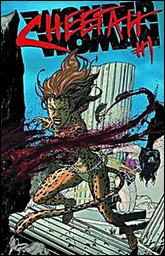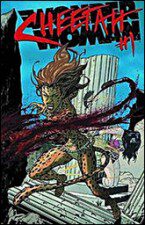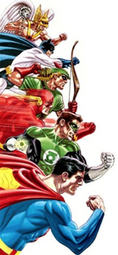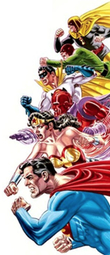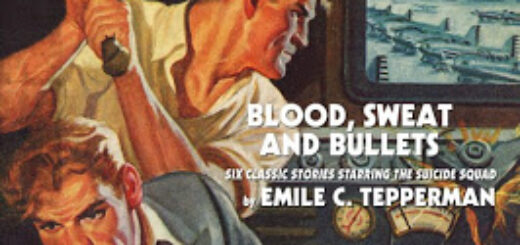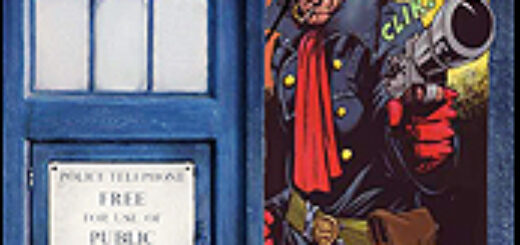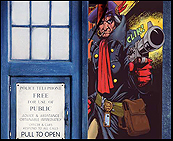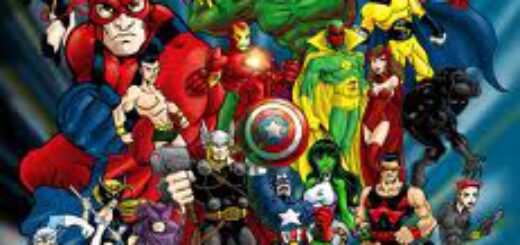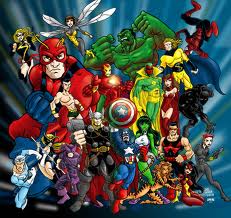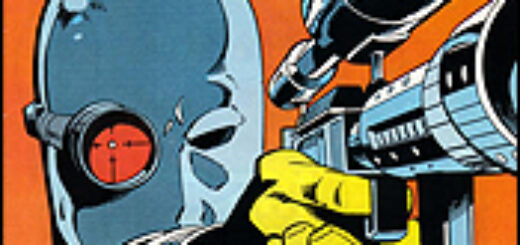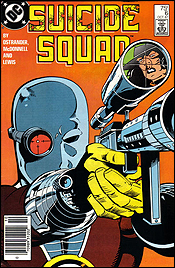John Ostrander: Why Did I Do That?
Last week in this space I touched on the subject of Amanda Waller and how she acted in the penultimate episode of this season’s Arrow. I mentioned how I found her acting a little out of character. I thought we’d probe that a little more as I explain what my thinking was when I created her in the first place
Before I start, I want to state that I know Amanda Waller is not my character. She belongs to DC Comics and, by extension, the Warners conglomerate. I’m glad to be receiving compensation when she gets used outside of comics and I look forward to the check I’ll eventually receive. What they do with Amanda is up to them and I generally refrain from discussing how others interpret her; I was given a free pass in interpreting existing characters so other creators should have that same freedom without my breathing down their necks.
That said, I think that if you’re using a character you should stay true to who that character is – what they are, who they are, what values they have. When Tom Mandrake and I took on The Spectre, we certainly put our own spin on him but, at the same time, we very much wanted to get down to the core of the character. There was a certain type of visual that we wanted to use. Otherwise, why do The Spectre? (Plug area: you can decide for yourself how effective we were when the TPB of the first 12 issues, The Spectre Vol. 1: Crimes and Judgments, goes on sale May 20. And we thank you for your support.)
I’ll dip now into my leaky cauldron of memory and try to recreate my thinking in the making of Amanda Waller. I was putting together the proposal for my version of Suicide Squad. The high concept of that was Dirty Dozen meets Mission: Impossible meets the Secret Society of Supervillains. The series needed someone in charge of the Squad and there was a list of possible candidates within the DCU such as King Faraday and Sarge Steel. However, I wanted someone original.
Then, as now, I was into diversity in comics. I wanted someone, a type, who hadn’t existed before. I wanted a female and I wanted a person of color. I also wanted her to have a certain size, a certain heft and be of a certain age. Why? She would seem more real and, despite having no superpowers, she needed to be imposing. Her power was her will and, with that, a seriously bad attitude. Her physique was not superhero or supermodel; she seemed more real that way, to my mind. I had met women like her. My father’s mother, although not black, was an imposing woman. Shaped like the Wall. She scared the shit out of me when I was a kid. Not someone I wanted to provoke. Hell, I didn’t want her to glare at me. So a lot of Grammy O went into Amanda.
And, I guess, some of me. There are those who have told me that somewhere deep inside I have an angry, middle-aged black woman trying to get out. Yeah, that scares me, too.
Waller is ruthless but that comes from her background. For many years, she lived in Cabrini Green in Chicago, one of the projects. She lost her husband and a daughter to the violence there. She got the rest of her children out and then went to college herself. Lots of will. She knows first hand about violence and criminals. She knows a lot about getting the job done. She has no compunction of using criminals to achieve ends that would benefit, in her mind, the greater good (which she defines).
I think some people misread her that way as well. They use the badassery at the surface and interpret her mostly as a villain. I don’t see her that way and never have. She does have a conscience and she keeps people around her who prick that conscience. She may not do as they recommend but she does hear them and, deep down, considers those recommendations.
Waller is also not stupid. She is both street smart and book smart. She has college degrees. In short, she’s not one note. There are depths and nuances in her – at least as I conceived and wrote her. I think that’s what made her a compelling figure.
I don’t understand why they felt, both on the TV show and now in the comics, that they had to make her look like a fashion model. To my mind, she loses lots of what made her unique. She looked like no one else in comics; now she looks like most females in comics.
I also don’t understand why, on Arrow, they had her prepared to do a nuclear strike on Oliver Queen’s home town of Starling. Yes, there were super-powered thugs trashing the town and she stated she couldn’t risk their getting out of the city. However, Arrow told her he had a way of neutralizing them and she cut him off. Okay, I understand from a plot point perspective that the writers felt they needed a ticking clock but it’s a stupid move. It’s morally indefensible and not very bright. Nuking an American city? The repercussions from it would expose her and her group. It’s too over the top; it makes her irredeemable when there were other possibilities. Hell, shoot the thugs with exploding bullets. You have to figure that being in pieces might at least slow these thugs down. But no – she went for the nuclear option. That’s not the Amanda I know.
Will I cash the participation checks when they come to me? Oh yeah. And, again, I’m not trying to tell anyone to do the Wall my way. Couldn’t make them do it if I wanted to. I just wanted to go on record as what I was thinking when I created her.
Now you know.






